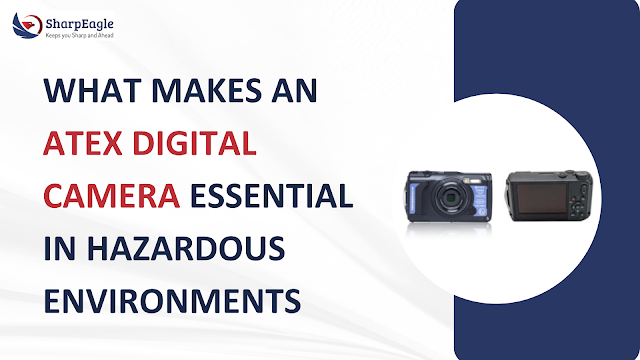Explosion Proof Digital Camera vs. Regular Camera: Key Differences
In industries where safety is paramount, even the smallest spark can lead to catastrophic consequences. While standard digital cameras have become essential tools for photography, documentation, and security, they are not designed for hazardous environments. This is where explosion proof digital cameras play a critical role.
Understanding the differences between an explosion proof digital camera and a regular camera can help industries, safety officers, and engineers make informed choices when operating in high-risk areas. In this article, we’ll explore the key differences between the two and why explosion proof cameras are an essential investment for hazardous locations.
1. Purpose and Application
Regular Cameras:
Standard digital cameras are primarily designed for general use — photography, videography, security, and content creation in normal environments. They work well in offices, homes, public spaces, and outdoor areas free from flammable gases or combustible dust.
Explosion Proof Cameras:
Explosion proof digital cameras, on the other hand, are purpose-built for use in environments where explosive atmospheres may occur. These include oil and gas refineries, chemical plants, mining operations, paint manufacturing units, and other industrial settings. The primary aim of these cameras is to prevent any internal sparks or heat from igniting a hazardous atmosphere.
2. Construction and Design
Regular Cameras:
Standard cameras are made with lightweight plastics, metals, and glass components. They are designed for comfort, ease of use, and aesthetic appeal.
Explosion Proof Cameras:
Explosion proof cameras feature robust construction. They are often housed in stainless steel or heavy-duty aluminum enclosures that are flameproof and corrosion-resistant. The design follows strict industrial safety standards like ATEX, IECEx, or UL to ensure safe operation even under extreme conditions.
3. Safety Certifications
Regular Cameras:
Conventional cameras do not require any specialized certifications for safe usage in normal environments.
Explosion Proof Cameras:
Explosion proof cameras must meet stringent certification requirements. For example:
- ATEX (Atmosphères Explosibles) certification in Europe
- IECEx certification for international markets
- NEC (National Electrical Code) standards in North America
These certifications confirm that the camera is safe to use in areas with potentially explosive gases, vapors, or dust.
4. Durability and Environmental Resistance
Regular Cameras:
Most regular cameras are not designed to withstand severe conditions. They may have basic water-resistance (IP67 or less) but are vulnerable to shocks, vibrations, high temperatures, and corrosive substances.
Explosion Proof Cameras:
Explosion proof digital cameras are engineered to operate in the harshest environments. They offer:
- Extreme temperature resistance
- Shock and vibration resistance
- High IP ratings for protection against dust and water (often IP68)
- Resistance to corrosive chemicals and saltwater environments
5. Functionality and Features
Regular Cameras:
Modern digital cameras offer high-resolution imaging, zoom capabilities, autofocus, and other standard features for photography and videography.
Explosion Proof Cameras:
Explosion proof cameras include many of the same imaging capabilities but are designed with added safety and durability features:
- High-resolution imaging for accurate monitoring
- IR (infrared) capabilities for low-light or night-time surveillance
- Thermal imaging in some models
- Pan, tilt, and zoom (PTZ) functions
- Remote monitoring over networks
- Anti-condensation and anti-fog coatings for clear visibility
6. Cost Considerations
Regular Cameras:
Standard digital cameras are widely available and affordable for consumers and businesses alike.
Explosion Proof Cameras:
Due to their specialized design, rigorous testing, and high-quality materials, explosion proof cameras come at a significantly higher price point. However, the cost is justified by the safety assurance and durability they provide in hazardous areas.
7. Maintenance and Longevity
Regular Cameras:
In safe environments, regular cameras require minimal maintenance and can last for years if properly cared for.
Explosion Proof Cameras:
Explosion proof digital cameras are built to endure and typically offer longer service life even in extreme environments. Regular inspections and maintenance are recommended as per industrial safety protocols.
Conclusion
The comparison between explosion proof digital cameras and regular cameras is straightforward. If your work environment does not expose you to hazardous materials, a regular camera is sufficient. However, for high-risk industries, an explosion proof camera is a critical safety requirement.
SharpEagle Explosion Proof Digital Cameras offer not just compliance with the highest safety standards, but also durability, functionality, and high-quality imaging for operational efficiency and worker safety.
.jpg)



Comments
Post a Comment